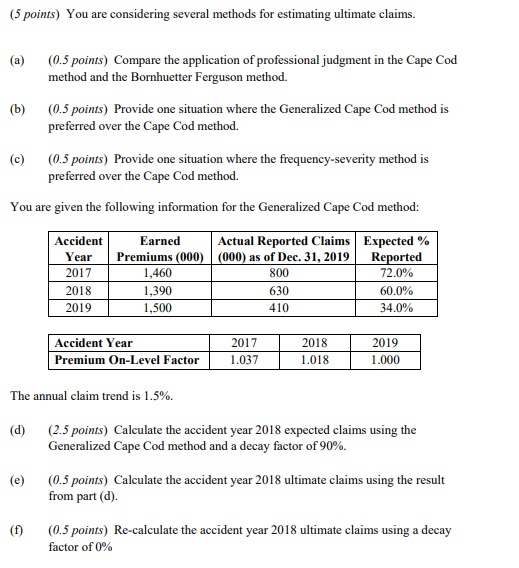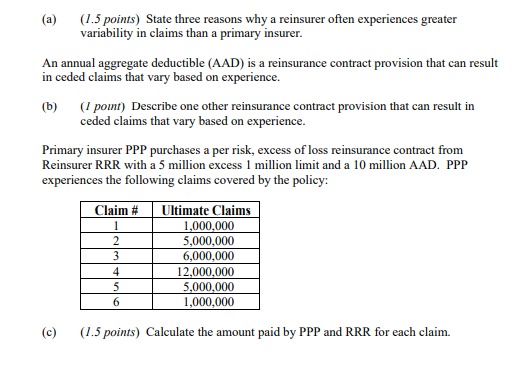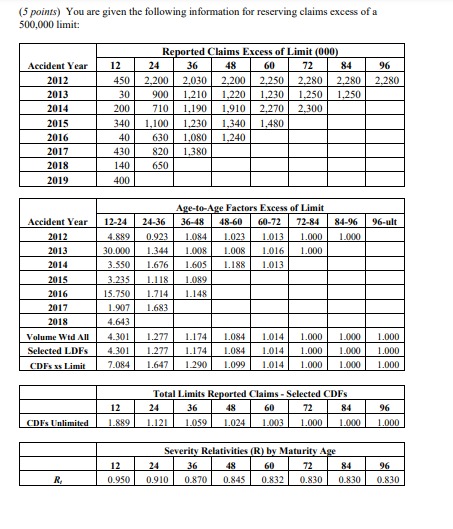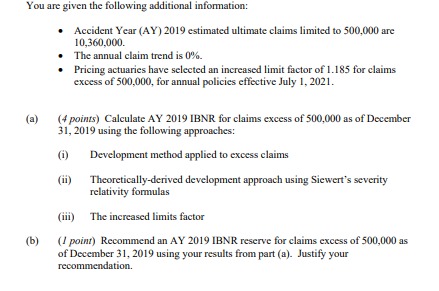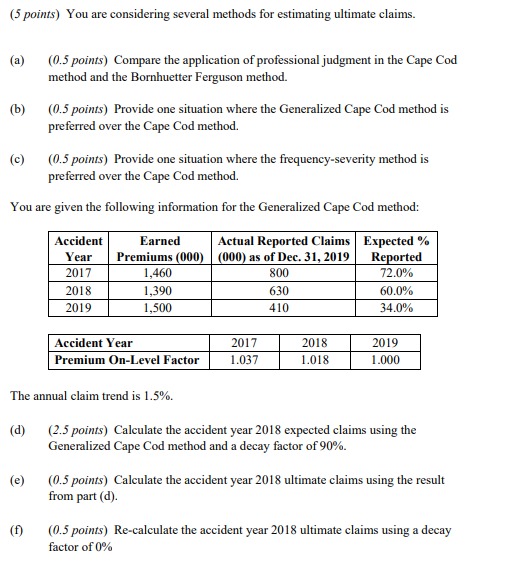
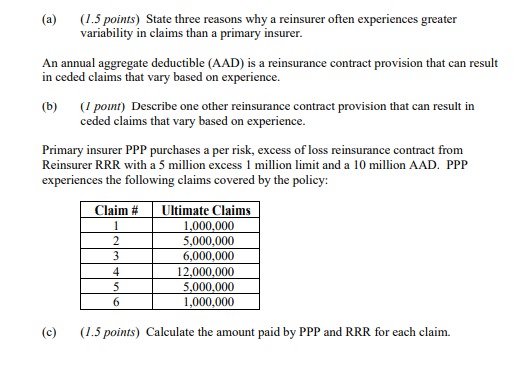
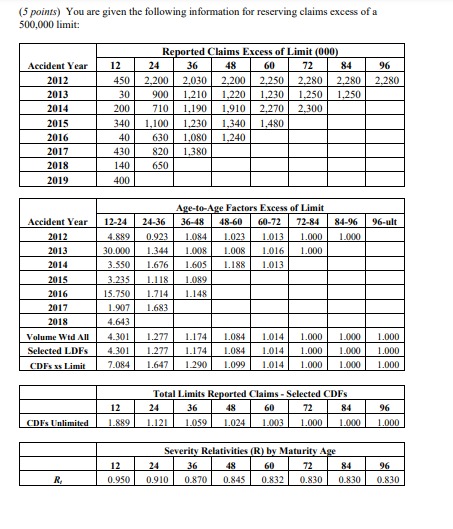
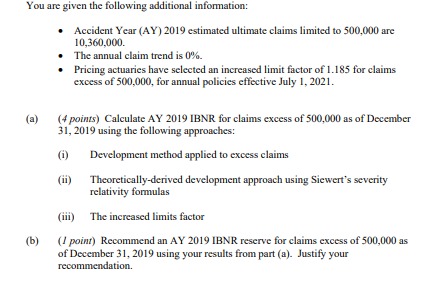
(5 points) You are considering several methods for estimating ultimate claims. (a) (0.5 points) Compare the application of professional judgment in the Cape Cod method and the Bornhuetter Ferguson method. (b) (0.5 points) Provide one situation where the Generalized Cape Cod method is preferred over the Cape Cod method. (c) (0.5 points) Provide one situation where the frequency-severity method is preferred over the Cape Cod method. You are given the following information for the Generalized Cape Cod method: Accident Earned Actual Reported Claims Expected % Year Premiums (000) (000) as of Dec. 31, 2019 Reported 2017 1,460 800 72.0% 2018 1,390 630 60.0% 2019 1,500 410 34.0% Accident Year 2017 2018 2019 Premium On-Level Factor 1.037 1.018 1.000 The annual claim trend is 1.5%. (d) (2.5 points) Calculate the accident year 2018 expected claims using the Generalized Cape Cod method and a decay factor of 90%. (e) (0.5 points) Calculate the accident year 2018 ultimate claims using the result from part (d). (f) (0.5 points) Re-calculate the accident year 2018 ultimate claims using a decay factor of 0%(a) (1.5 points) State three reasons why a reinsurer often experiences greater variability in claims than a primary insurer. An annual aggregate deductible (AAD) is a reinsurance contract provision that can result in ceded claims that vary based on experience. (b) (/ point) Describe one other reinsurance contract provision that can result in ceded claims that vary based on experience. Primary insurer PPP purchases a per risk, excess of loss reinsurance contract from Reinsurer RRR with a 5 million excess 1 million limit and a 10 million AAD. PPP experiences the following claims covered by the policy: Claim # Ultimate Claims - 1,000.000 5,000,000 6,000.000 12,000,000 5,000.000 1,000,000 (c) (1.5 points) Calculate the amount paid by PPP and RRR for each claim.(5 points) You are given the following information for reserving claims excess of a 500,000 limit: Reported Claims Excess of Limit (000) Accident Year 12 24 36 18 GO 72 84 2012 450 2,200 2,030 2,200 2,250 2,280 2,280 2.280 2013 30 900 1,210 1,220 1,230 1,250 1,250 2014 200 710 1,190 1,910 2,270 2.300 2015 340 1,100 1.230 1.340 1.480 2016 40 630 1,080 1,240 2017 430 820 1,380 2018 140 650 2019 400 Age-to-Age Factors Excess of Limit Accident Year 12-24 24-36 36-48 48-60 60-72 72-84 84-96 96-ult 2012 1.889 0.923 1.084 1.023 1.013 1.000 1.010 2013 30.010 1.344 1.008 1.008 1.016 1.000 2014 3.550 1.676 1.605 1.188 1.013 2015 3.235 1.118 1 089 2016 15.750 1.714 1.148 2017 1.907 1.683 2018 4.643 Volume Wid All 4.301 1.277 1.174 1.084 1.014 1.000 1.000 1.000 Selected LDFs 4.301 1.277 1.174 1.084 1.014 1.000 1.000 CDFs xs Limit 7.084 1.647 1.290 1.099 1.014 1.000 1.000 Total Limits Reported Claims - Selected CDFs 12 24 36 72 96 CDFs Unlimited 1.889 1.121 1.059 1.024 1.013 1.000 1010 1.000 Severity Relativities (R) by Maturity Age 12 36 72 06 0.950 0.910 0.870 0.845 0.832 0.830 0.830 0.830You are given the following additional information: Accident Year (AY) 2019 estimated ultimate claims limited to 500,000 are 10,360,000. The annual claim trend is 0%. . Pricing actuaries have selected an increased limit factor of 1.185 for claims excess of 500,000, for annual policies effective July 1. 2021. (a) (4 points) Calculate AY 2019 IBNR for claims excess of 500,000 as of December 31, 2019 using the following approaches: (i) Development method applied to excess claims (ii) Theoretically-derived development approach using Siewert's severity relativity formulas (ili) The increased limits factor (b) (/ point) Recommend an AY 2019 IBNR reserve for claims excess of 500,000 as of December 31, 2019 using your results from part (a). Justify your recommendation




